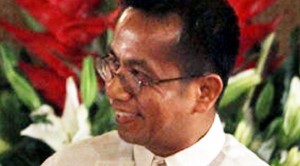Consumer prices rose at a slower-than-expected pace last August, staying within the official target range for the year to give the central bank breathing room to reconsider its hawkish view on policy settings.
Data released Friday showed that inflation stood at 4.9 percent last month, the same rate as July’s as power rates and food prices climbed. An Inquirer poll this week showed most analysts expected consumer price increases to accelerate.
Economic Planning Secretary Arsenio Balisacan, who is also director general of the National Economic and Development Authority (Neda), said in a statement that the government expected food supplies to improve in the coming months, relieving pressure on prices to rise.
“Food prices, while expected to remain elevated, are seen to normalize as the government steps up its rice importation,” Balisacan said.
He added that the start of the harvest for the main corn season, which is expected to be completed by mid-September, was seen to provide additional buffer to supply.
“Given the potential upside pressures linked to possible increases in food and oil prices and pending petitions for adjustments in utility rates, short term interventions should focus on ensuring supply sufficiency of key commodities,” he said.
Governor Amando M. Tetangco Jr. of the Bangko Sentral ng Pilipinas (BSP) was less hawkish in his pronouncements, saying the policy-making Monetary Board would “see if there is need to make further adjustments to policy settings so as to keep inflation expectations well-anchored.”
While headline inflation stayed flat, data showed that core inflation, which excludes items that are subject to volatile price swings, reached a 17-month high of 3.4 percent, the Philippine Statistics Authority (PSA) said.
“With core consumer price inflation (CPI) now starting to inch higher, the need for anchoring inflation expectations has risen further,” Barclays Bank analyst Rahul Bajoria said in a note to investors Friday.
Bajoria said the bank continued to see upside risks to inflation and said he believed growth would be stronger in the second half than in the first, given increased government spending and supportive external demand.
From a policy perspective, Bajoria said Barclays was of the view that the bigger challenge for the BSP would be to keep next year’s inflation target range, which was a lower 2- to 4-percent range.
